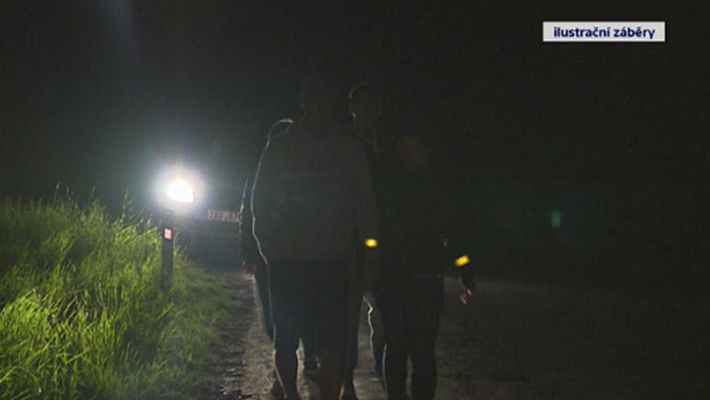Scientists from the Brno University of Technology have created a unique methodology for teaching lessons at night. It was based on research that dealt with drivers’ reactions to pedestrians in the dark in real life. Riding at night is the most difficult one for beginners, yet school driving tutorials do not bother.
What affects the visibility of pedestrians at night and how fast is the driver’s reaction? Researchers from the Institute of Forensic Engineering surveyed answers to questions directly in the field.
Four figures and more than two dozen drivers joined. They used special glasses with recording cameras for research. “The first camera is shot in the head of the driver, that is, he senses where the driver is looking, and the second camera captures the driver’s eye. It actually measures the direction of the point of view. “said the research director of the Institute of Forensic Engineering, BUT.
Comparing the two records, scientists came to the conclusion that while a man dressed in white would see a driver with the dipped beam switched on at nearly eighty feet, the pedestrian in black only to thirty. In the first case, the driver has four seconds to respond, but in the second he only has a second and a half left.
Some reflective elements may not be visible to the driver
Although the law requires pedestrians to wear reflective vests outside the village, it does not say exactly what and how. Some reflective tapes, for example on the shoulder, according to the Institute of Forensic Engineering’s experiments may not be sufficient. “It is important for the pedestrian to use more reflective materials and some on the lower part of the body,” said Robert Klaus. The research also found that the muddy car was noticeably worse at night than during the day, and drew attention to the danger of wildlife nightfall.
Based on these results, researchers developed two methodologies. One serves forensic experts in dealing with traffic accidents, the second publication “Driving for Darkness-Visibility” can be used by instructors in driving schools. Educational textbooks on the market deal with this issue only marginally or not at all.
Driving school has acquired a trainer and offers a special course
Pert Smith from Brno used his own training material in his driving school and also bought a simulator who can simulate the ride at night. “I think it’s a question of driving school. How it does and what space it does, and also the interest of the client, “said driving school driver Pert Smith. For those who are interested, there is also an extra-course course for people who want to try their ride at night.
Experts recommend instructors to give night driving lessons for at least one hour of theory to future drivers and two hours of theory for professional drivers. It would also be appropriate for them if questions related to this problem were also found in driving tests.
